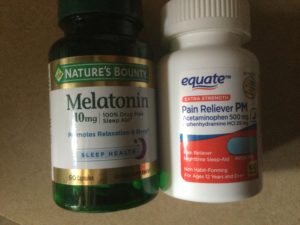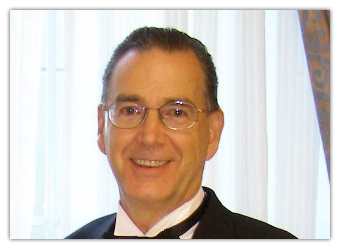Selenium has also been linked to a reduced risk of bladder cancer, although one of the most well-known studies regarding cancer and selenium was a 1996 study by the late Larry Clark, Ph.D., of the University of Arizona, which linked the mineral to an overall lower incidence of cancer risk of death.
In the study of 1,300 older people, the occurrence of cancer among those who took 200 micrograms of selenium daily for about seven years was reduced by 42 percent compared to those given a placebo.9 Cancer deaths for those taking the selenium were cut almost in half.
In addition, the men who took selenium had 63 percent fewer prostate cancers, 58 percent fewer colorectal cancers, 46 percent fewer lung cancers and overall 37 percent fewer cancers. Selenium was even found to reduce the risk of lung cancer to a greater degree than stopping smoking.
The cancer reductions were so significant that the blinded phase of the trial was stopped early, and no cases of selenium toxicity occurred. Some of the scientific explanations for selenium’s anti-cancer effects include:
- Increased antioxidant protection and immune system support
- Regulation of cell proliferation and apoptosis (programmed cell death)
- Triggering DNA repair in damaged cells
- Suppression of growth of blood vessels supplying nutrients to the cancer
- Inhibition of tumor cell invasion
A Little Bit of Selenium Goes a Long Way Toward Protecting Your Health
Selenium for Immune System Support
It’s thought that selenium may exert its anti-cancer effects not only due to its antioxidant properties but also because of its ability to boost immune system function. Selenium may stimulate the immune system so it’s able to eliminate early cancers, for instance.
Further, a study in the North American Journal of Medical Sciences found the combination of selenium and beta-glucans (long-chain polysaccharides found in mushrooms) is particularly beneficial. The researchers concluded:10
“Using two different murine models of cancer, we showed that the Se/glucan combination strongly suppressed the growth of cancer, mostly probably via stimulation of immunity.A combination of glucan with Se offers superior stimulation of immunity and inhibition of cancer growth.”
Aside from cancer, this immune stimulation may be beneficial for prevention of infectious diseases. Selenium is often mentioned in concert with HIV, as HIV-infected individuals often have low selenium levels.
Some studies have also found an association between selenium deficiency and progression to AIDS, while others have found selenium supplementation may reduce hospitalizations and improve white blood cell counts among this population.11
Selenium to Fight Viral and Bacterial Infections
It may also be useful for other viral infections, including influenza, as well as potentially bacterial infections. Researchers wrote in Advances in Nutrition:12
“Viral and bacterial infections are often associated with deficiencies in macronutrients and micronutrients, including the essential trace element selenium. In selenium deficiency, benign strains of Coxsackie and influenza viruses can mutate to highly pathogenic strains.
Dietary supplementation to provide adequate or supranutritional selenium supply has been proposed to confer health benefits for patients suffering from some viral diseases, most notably with respect to HIV and influenza A virus (IAV) infections.
In addition, selenium-containing multimicronutrient supplements improved several clinical and lifestyle variables in patients coinfected with HIV and Mycobacterium tuberculosis. Selenium status may affect the function of cells of both adaptive and innate immunity.”
One way selenium influences immune response is via selenoproteins (selenium-containing proteins). Individual selenoproteins are known to regulate inflammation and immunity, while it’s known that adequate levels of selenium are necessary to initiate immunity and also for regulating excessive immune responses and chronic inflammation.13
Your body has only a small requirement for selenium. The minimum daily recommended dietary allowance (RDA) for this mineral is 55 micrograms (mcg) for adults, and this is one nutrient where you don’t want too much.
While small amounts provide important benefits, taking too much (for instance, 400 mcg daily) has potentially been linked to an increased risk of diabetes.2 That being said, unless you’re taking a supplement, it’s difficult to “overdose” on selenium that’s naturally occurring in foods.
As mentioned, many people struggle to get enough. This is particularly true if you eat a primarily processed-food diet, as selenium is destroyed by refining and processing.3 Why is it so important to be sure your body has optimal selenium levels?
It acts as a powerful antioxidant (and its antioxidant effects increase when combined with vitamin E4).
Selenium’s Antioxidant Effects May Help Prevent Chronic Disease
Selenium, therefore, plays an important role in preventing chronic diseases and is also important for thyroid and immune system function. According to research published in the journal Microbial Ecology in Health and Disease:5
“Selenium [Se] is critical to the health of living organisms. It has been postulated that the vast majority of the world’s population has suboptimal Se intakes, and hence is at increased risk of several diseases such as cancer, heart disease, viral diseases and other conditions that involve increased levels of oxidative stress.
There are several disease conditions (e.g. diabetes, several infectious diseases and possibly asthma) where … good Se status in combination with an adequate intake of other antioxidative nutrients may help cells and tissues better to cope with harmful oxidative stress caused.
For instance, by some toxic heavy metal or other environmental pollutants, by hyperglycaemia, or by the immune system’s reaction to infection. Efforts to increase Se concentration in the diet are urgent for both current and future generations.”
Low Selenium Levels May Increase Your Cancer Risk
Low selenium levels are linked with an increased risk of death from cancer and all causes.6
In 2015, research published in the International Journal of Cancer revealed that higher selenium levels are linked to a lower risk of colorectal cancer, particularly in women. The study also found that selenium status is suboptimal in many Europeans.7
In 2016, a meta-analysis of 69 studies also found that high selenium exposure (from food but not from supplements) had a protective effect on cancer risk and decreased the risk of the following types of cancer:8
- Breast
- Lung
- Esophageal
- Gastric
- Prostate
Selenium has also been linked to a reduced risk of bladder cancer, although one of the most well-known studies regarding cancer and selenium was a 1996 study by the late Larry Clark, Ph.D., of the University of Arizona, which linked the mineral to an overall lower incidence of cancer risk of death.
In the study of 1,300 older people, the occurrence of cancer among those who took 200 micrograms of selenium daily for about seven years was reduced by 42 percent compared to those given a placebo.9 Cancer deaths for those taking the selenium were cut almost in half.
In addition, the men who took selenium had 63 percent fewer prostate cancers, 58 percent fewer colorectal cancers, 46 percent fewer lung cancers and overall 37 percent fewer cancers. Selenium was even found to reduce the risk of lung cancer to a greater degree than stopping smoking.
The cancer reductions were so significant that the blinded phase of the trial was stopped early, and no cases of selenium toxicity occurred. Some of the scientific explanations for selenium’s anti-cancer effects include:
- Increased antioxidant protection and immune system support
- Regulation of cell proliferation and apoptosis (programmed cell death)
- Triggering DNA repair in damaged cells
- Suppression of growth of blood vessels supplying nutrients to the cancer
- Inhibition of tumor cell invasion
Selenium for Thyroid Health, Asthma and Fertility
The wide range of selenium’s effects is still being unraveled, but it’s known that selenium plays a role in thyroid function. Your thyroid contains more selenium (per gram of tissue) than any other organ and expresses specific selenoproteins.14
Researchers are looking into selenium’s role in Hashimoto’s disease15 and Graves’ disease as well as its use in pregnant women with anti-TPO (thyroid peroxidase) antibodies. There is also some indication that selenium may be useful for people with chronic asthma, and observational studies have demonstrated that people with chronic asthma may have lower levels of selenium than those without.16
Low selenium levels during pregnancy may also play a role in childhood asthma, although this is still being investigated.17 Selenium has also been found to have a favorable effect on male fertility,18as it is required for sperm motility. Among women, there is suggestion that it may reduce the risk of miscarriage.19 Beyond this, selenium deficiency has been linked to adverse mood states.
Best Food Sources of Selenium
Selenium is a nutrient you should strive to get via your diet. There is still quite a bit of contradictory and confusing research surrounding selenium and its role in human health, and much of this stems from the use of selenium supplements.
Researchers writing in the Journal of Environmental Science and Health even went so far as to ask whether we’re witnessing a Copernican revolution in regard to selenium, as there is some evidence suggesting it may have toxic effects at lower concentrations than was previously believed.20 They even noted that selenium’s “upregulation of antioxidant proteins … may be a manifestation of self-induced oxidative stress.”
Until more is understood about selenium’s role in the body, it makes sense to focus on eating a variety of whole, unprocessed foods, which will naturally optimize your selenium levels (along with other important nutrients). Good food sources of selenium include:
|
Brazil nuts (which average about 70 to 90 micrograms per nut)
|
Sardines
|
Wild-caught Alaskan salmon
|
|
Pastured organic eggs
|
|
|
|
Liver (lamb or beef)
|
Chia seeds
|
Mushrooms
|
In the U.S., selenium levels in soil tend to be relatively high (northern Nebraska and the Dakotas have soil that is especially high in selenium). However, in other areas such as China, Russia, Australia, New Zealand and Europe, soil levels of selenium tend to be much lower, and if you eat food primarily grown in these areas, a high-quality selenium supplement may be beneficial. Even parts of the U.S. have been identified as selenium-deficient regions, including:
- The Pacific Northwest
- Parts of the Great Lakes region and east of it toward New England
- Parts of the Atlantic Coast
If you live in one of these areas and focus your diet on locally grown foods, you may be low in selenium. You may also have low levels of selenium if you smoke cigarettes, drink alcohol, have had weight loss surgery, or have Crohn’s disease or ulcerative colitis. If you choose to take a selenium supplement for health maintenance, you should use it in a high-quality bioavailable form in a low dose (such as 200 mcg).

 Take 10mg of melatonin and two of the pain reliever pm tablets 30 minutes or more before bedtime. Relax in recliner until sleepy, then go to bed. Works great for me.
Take 10mg of melatonin and two of the pain reliever pm tablets 30 minutes or more before bedtime. Relax in recliner until sleepy, then go to bed. Works great for me.
